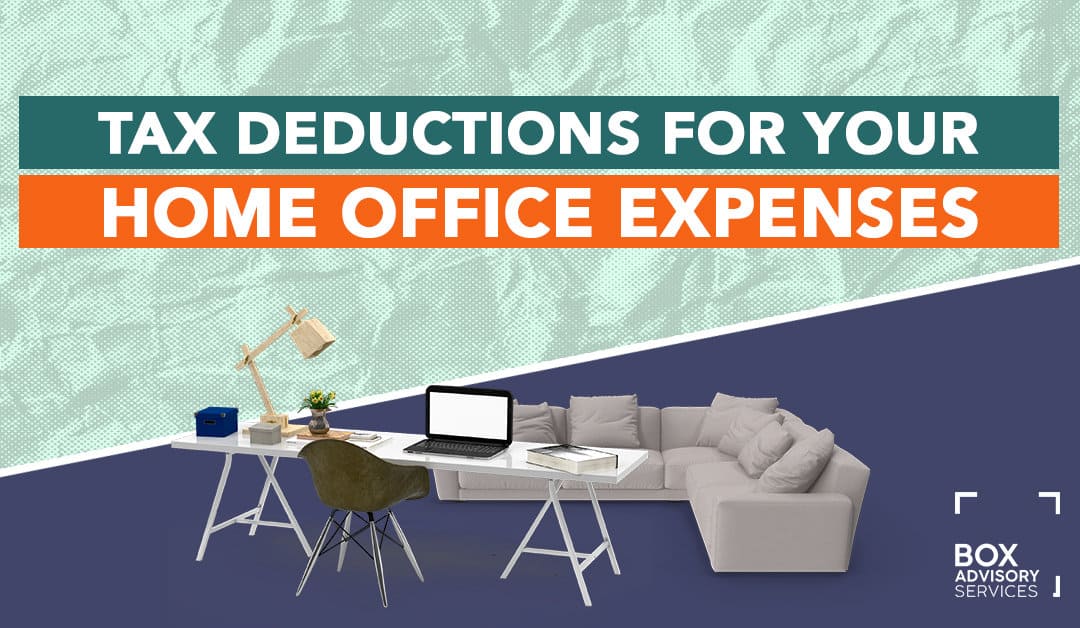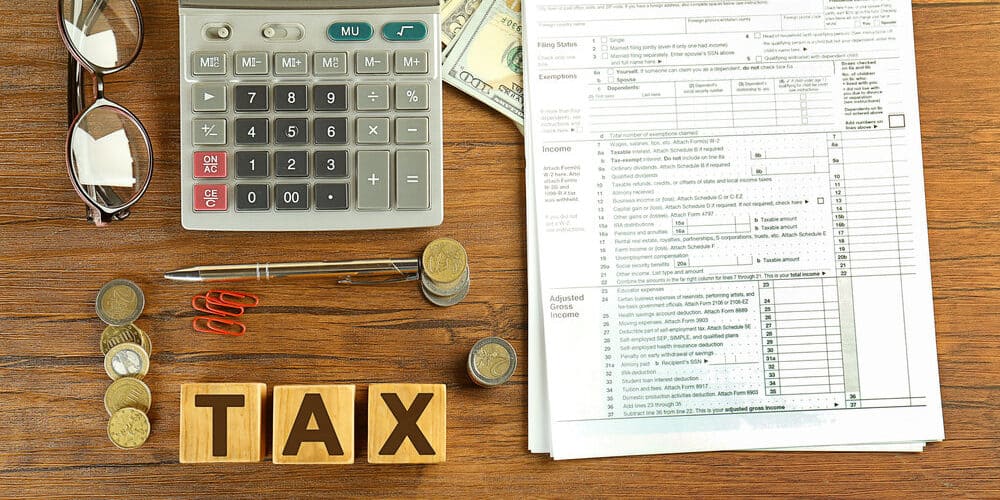
BY
|
Home Office Expenses: The Essential Guide
Knowing about the tax deductions for your home office expenses will certainly boost your small business tax return.
However, many small business owners miss out on these expense claims because they aren’t equipped with the knowledge presented by the Australian Tax Office (ATO).
Home-based businesses are a large part of the Australian business community, with nearly one million people running their businesses from home. And now, more Australian small business owners have opted to use their home as their principal place of business.
Suppose you’re one of these business owners now using your home as your primary business premises. In that case, you may be able to claim a deduction for some of your home expenses relating to the area that you use for work-related household costs incurred while working from home.
We’ve put together this ultimate guide on what you can and can’t claim on home office expenses for small business owners.
Eligibility and Basics
To be eligible to claim home office expenses, you must use a dedicated space in your home for work purposes. This could be a home office, study, or any other area for your business activities. The Australian Taxation Office (ATO) allows individuals to claim a tax deduction for expenses related to maintaining this space.
Home office expenses fall into two main categories: running and occupancy expenses. Running expenses include costs such as utilities, internet, and phone bills. These are the day-to-day costs of keeping your home office operational.
On the other hand, occupancy expenses cover costs like rent or mortgage interest, property taxes, and house insurance premiums. These are the costs associated with owning or renting your workspace.
To claim home office expenses, you need to keep detailed records of all related costs and calculate the proportion of work-related expenses. This ensures that you can substantiate your claims and maximise your tax deduction.
Employee Working From Home vs. Home-Based Business Owners
There is a difference between being an employee working from home and running your business at home.
If your home is not a business place, you are merely acting as an employee working from home. Your tax deductions are generally limited to running expenses only, such as electricity or internet expenses.
If, however, you are using your home as a place of business and do most of your work at home, then the ATO allows you to claim further expenses such as rent and insurance, for instance.
It is important to consider individual personal circumstances when choosing tax methods or understanding insurance needs, as the optimal approach can vary significantly based on one’s unique financial situation and objectives.
Whether or not you can claim deductions for your home office expenses is dependent on these three scenarios:
- you have a work area such as a study or spare room which is used for work activities, but your home isn’t your principal place of business because you also have an office elsewhere;
- you don’t have a work area because you have an office elsewhere and you don’t have a room set aside for work, but you may work at the dining room table for a few hours a week; or
your home is the principal place of business because you run your business from home and you have a space set aside exclusively to carry out your business activities. You can access examples of businesses that can be home-based on the ATO’s website.
What Home Office Expenses Can You Claim?
Based on the categories mentioned above, you can claim the following tax deductions for home office expenses:
Maintaining records for home office running expenses is crucial, as these expenses should be documented in relation to the hours worked at home. For more information, you can refer to our article on working-from-home tax deductions.
| Deductions you may be able to claim | You do have a work area | You don’t have a work area | Your home is your principal place of business |
| Running Expenses | Yes | Yes | Yes |
| Depreciation on office plant and equipment | Yes | Yes | Yes |
| Depreciation on capital works items | Yes | No | Yes |
| Occupancy expenses | No | No | Yes |
Occupancy Expenses
Should your home qualify as your primary place of business, you may be able to claim occupancy expense tax deductions for your home-based business expenses.
Note: these expenses apply only to small business owners who work at home. Employees who work from home occasionally can’t use these expenses to claim tax deductions.
Occupancy expenses are the expenses that you pay to rent or own your home, such as:
- rent;
- interest on your mortgage;
- water rates;
- land taxes; and
- home insurance premiums.
Running Expenses
Suppose you are using your house to complete work activities. In that case, regardless of whether you have a work area or not, you incur an increase in the cost of your home facilities.
Keeping detailed records and understanding how to claim the home office tax deduction is important. As remote work increases, many individuals, including freelancers and employees, may be eligible for this deduction, which can help optimise their financial benefits.
Accordingly, the ATO allows anyone who uses their home to do work (whether it’s the primary place of business or whether you have an office space or not), to claim tax deductions on these expenses:
- electricity;
- heating and cooling;
- work-related phone costs;
- lighting; and
- cleaning cost.
Property Depreciation
Property depreciation is the decrease in the value of various items in your home due to wear and tear. While this is considered a running expense, not all categories can claim home office deductions for depreciation.
Individuals in either category mentioned above can claim depreciation of plant and equipment items such as desks, chairs and computers.
On the other hand, depreciation of capital works items such as carpets, curtains and light fittings can only be claimed by individuals who either have a dedicated workspace or run their business from home (i.e. their home is their primary place of business).
How Do You Calculate Home Office Deductions for Running Expenses?
As of 2025, the Australian Taxation Office (ATO) has updated its guidelines for claiming home office expenses. The shortcut method, which was introduced during the COVID-19 pandemic, is no longer available.
Taxpayers can now choose between two methods: the Fixed Rate Method and the Actual Cost Method.
1. Fixed Rate Method
From 1 July 2022, the fixed rate method has been revised to simplify claims for working-from-home expenses. The current rate is 67 cents per hour worked from home.
What does it cover?
The 67 cents per hour rate includes:
- Electricity and gas for heating, cooling, and lighting
- Internet usage (home and mobile)
- Phone usage (home and mobile)
- Stationery and computer consumables (e.g., printer ink, paper)
Using the fixed rate method, you cannot claim separate deductions for these expenses. However, you can still claim additional deductions for:
- Depreciation of assets costing more than $300 (e.g., office furniture or computers)
- Repairs and maintenance of work-related equipment
- Cleaning expenses for a dedicated home office
Record-keeping requirements
To use this method, you must:
- Keep a record of the total hours worked from home (e.g., timesheets or a diary).
- Retain receipts or invoices for any additional expenses claimed beyond the 67 cents per hour rate.
Example
Yang works as a software engineer and logs 560 hours working from home in the 2024–25 financial year. He also purchased a desk ($250) and an office chair ($299) used exclusively for work.
Yang’s deduction is calculated as follows:
- Hours worked: $375
- Depreciation (desk): $250
- Depreciation (chair): $299
Total: $924
2. Actual Cost Method
This method allows you to claim deductions for the actual expenses incurred while working from home. It is best suited for those who can accurately track their work-related expenses.
What can you claim?
You can claim the work-related portion of:
- Electricity and gas
- Internet and phone bills
- Cleaning costs
- Depreciation of equipment (e.g., computers, desks)
- Consumables like stationery
If you have a dedicated home office, you may also claim occupancy costs (e.g., rent or mortgage interest) based on the percentage of your home used for work.
Record-keeping requirements
You must:
- Maintain detailed records of all expenses.
- Apportion costs between work and personal use based on actual usage.
Example
Lucy runs her recruitment business from her rented home. Her workspace occupies 20% of her house’s total area. Her rent is $500 per week, and she works 49 weeks in the year.
Her calculation is:
- Rent deduction: $500 X 20% = $100 per week
- Annual rent deduction: $100 X 49 = $4,900
If Lucy incurred additional costs like electricity or internet, she would need to calculate and apportion those separately.
Important Updates for 2025
- The shortcut method is no longer available.
- The fixed rate has increased to 67 cents per hour and now includes internet and phone usage.
- A dedicated home office is no longer required to use the fixed rate method.
- Comprehensive record-keeping is essential under both methods.
Record Keeping and Substantiation
Accurate record-keeping is crucial when claiming home office expenses. The ATO requires that you maintain detailed records of all expenses you intend to claim. This includes receipts, invoices, and bank statements. Additionally, you must keep a log of the hours you work from home, as this information is essential for calculating your tax deduction.
You are required to keep these records for at least five years from the date of your tax return. Whether you choose to store your records digitally or in a physical file, they must be easily accessible in case of an audit. Proper documentation helps substantiate your claims and ensures that you are prepared for any scrutiny from the ATO.
Common Mistakes to Avoid
When claiming home office expenses, it’s important to avoid common pitfalls that can lead to errors or even audits. Here are some mistakes to watch out for:
- Incorrectly Calculating Expenses: Ensure that you accurately calculate the work-related proportion of your household costs. Miscalculations can lead to incorrect claims and potential issues with the ATO.
- Failing to Keep Records: Always keep detailed records of your expenses, including receipts, invoices, and bank statements. Without proper documentation, you cannot substantiate your claims.
- Claiming Personal Expenses: Only claim expenses that are directly related to your work. Personal expenses, such as general household items, should not be included in your claims.
- Not Considering Occupancy Expenses: If you use a dedicated space in your home for work, remember that you may be able to claim occupancy expenses such as rent or mortgage interest. Neglecting these can result in missed deductions.
What Home Office Expenses Can’t You Claim?
You can’t claim home office deductions for:
- general household items such as coffee, tea and milk that you would usually get at an office; or
- your children and their education (if they are homeschooled or are set up for online learning).
Key Takeaways
If you run your business from your home, the ATO allows you to claim certain tax deductions for your home-office expenses.
You can claim deductions for two categories of expenses:
- running expenses; and
- occupancy costs.
While the shortcut and fixed-rate method are relatively simple to calculate, it can get a bit tricky when working out your home office deductions using the actual cost method. So, you may want to consult a registered tax agent.
At Box Advisory Services, our team of tax and accounting experts have helped hundreds of small businesses and contractors with navigating through changes brought by the global coronavirus pandemic and beyond.
Given that every cent counts in a distressed market, our focus is on ensuring that you’re maximising every dollar you can when completing your tax return.
To see how we can help you calculate your home office tax deductions, book a free consultation with us today.
Sign up to our monthly newsletter where we share exclusive small business and contractor advice!
Disclaimer:
Please note that every effort has been made to ensure that the information provided in this guide is accurate. You should note, however, that the information is intended as a guide only, providing an overview of general information available to contractors and small businesses. This guide is not intended to be an exhaustive source of information and should not be seen to constitute legal or tax advice. You should, where necessary, seek a second professional opinion for any legal or tax issues raised in your business affairs.




